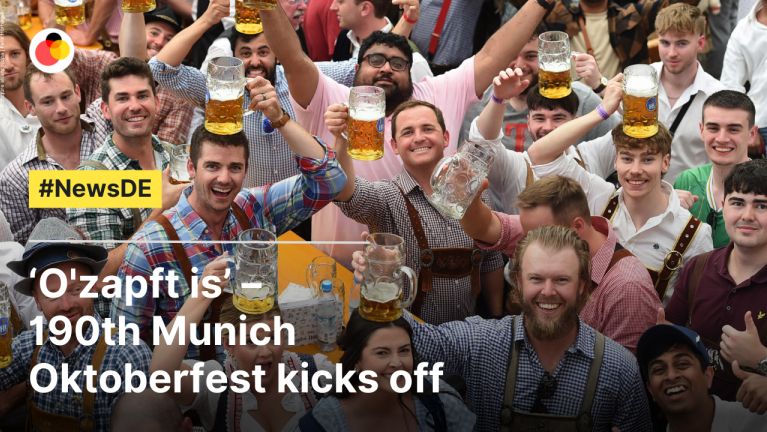Oktoberfest – Munich’s world-famous beer festival
Visitors pack the beer tents to drink and celebrate at the Wiesn, while fairground rides, live music and a lively atmosphere add to the fun. Find out more about the world’s biggest traditional fair.
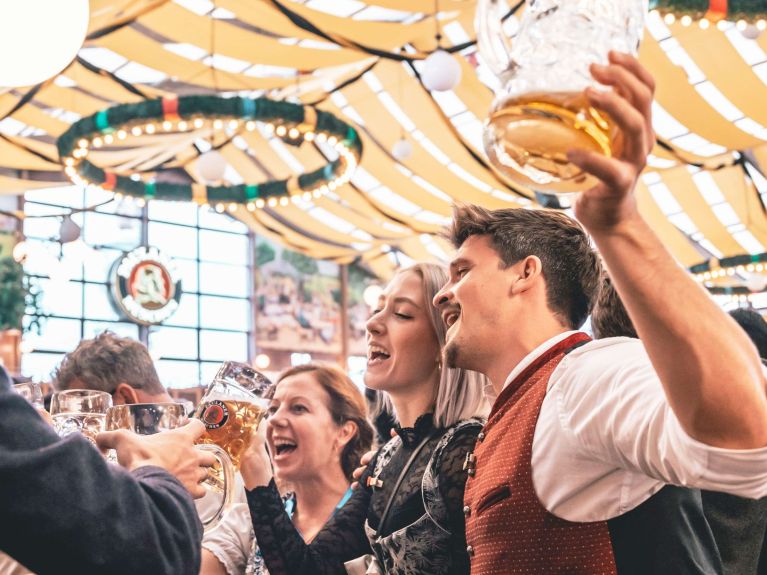
Known locally as the Wiesn, the Oktoberfest is the largest traditional fair in the world – a Munich institution with cult status and a symbol of Bavarian culture. Ever year more than six million people travel to the Bavarian capital to celebrate on Theresienwiese.
First held in 1810 to mark the wedding of Crown Prince Ludwig and Princess Therese of Saxony-Hildburghausen, the fair has since been shifted gradually into September to take advantage of better weather.
What is Oktoberfest and why is it celebrated?
The Oktoberfest is a traditional fair held on Theresienwiese – a vast, open festival site in the centre of Munich. It starts on a Saturday in September: the mayor of Munich gets things under way in the Schottenhamel tent, officially declaring “Es ist angezapft!” (“The first keg is tapped”) – or in Bavarian dialect: “O’zapft is!”
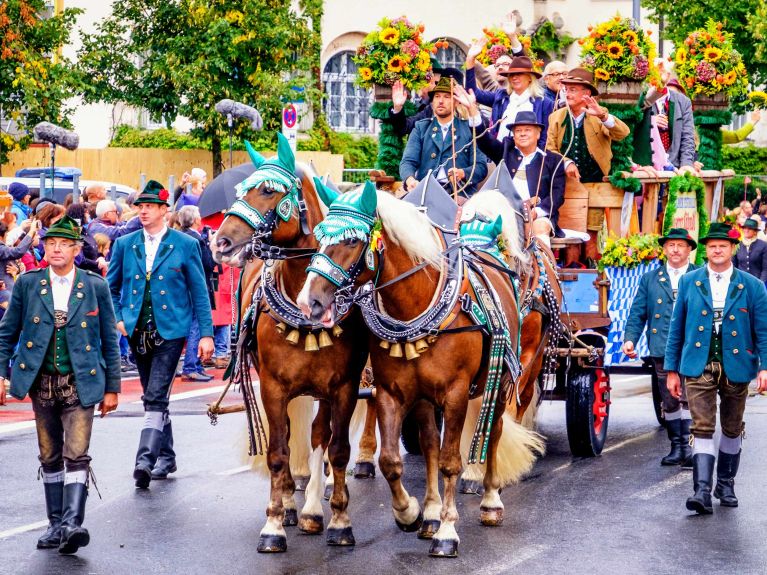
There is no charge for entering the grounds and the festival runs for about two and a half weeks, ending on the first Sunday in October. Most visitors come from Munich and the surrounding region.
The Oktoberfest dates back to a horse race held at this site in Munich more than 200 years to mark the wedding of Crown Prince Ludwig and Princess Therese on 12 October 1810.
Traditions at the “Wiesn”: is the Oktoberfest just about beer?
The Munich Oktoberfest is best known and loved for the fact that it involves large numbers of people drinking beer together. Munich’s breweries brew a special Oktoberfest beer just for the “Wiesn” with a slightly higher alcohol content. But Oktoberfest is about more than just beer. Visitors can celebrate in 38 “tents” – large temporarily constructed beer halls that can seat several thousand people at a time. There they can also enjoy Bavarian dishes such as pretzels, roast chicken, pork knuckle, sausages and grilled fish on a stick, and there are vegetarian options, too, such as “Obazda” (a spiced cheese mix), “Kaiserschmarrn” (caramelised shredded pancake with fruit compote) and sweet strudels.
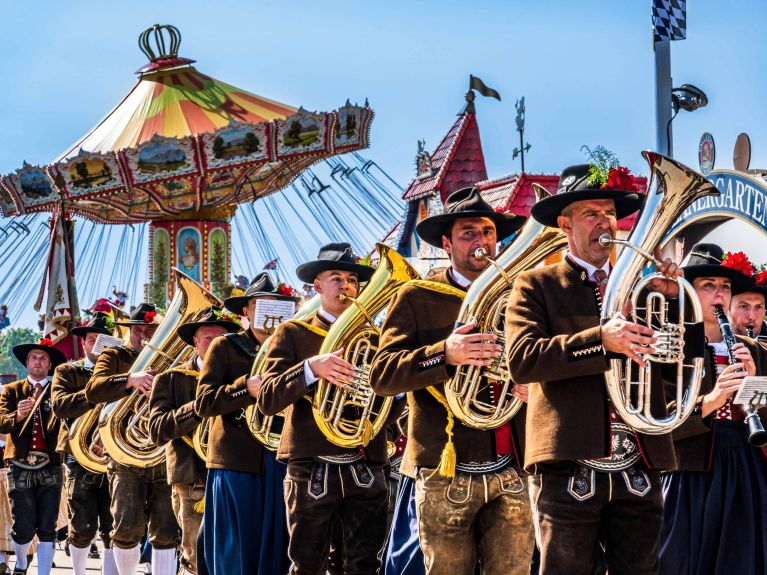
The “Festzelte” at Oktoberfest
The 17 large and 21 smaller “Festzelte” or “beer tents” – the vast temporarily constructed beer halls that form the heart of the “Wiesn” – each have their own character and charm, often marked by traditional Bavarian decoration and a distinctive choice of music. Some of the best-known ones include the following:
- Schützen-Festzelt: Many Oktoberfest fans consider this Wiesn tent the most beautiful, with a wraparound balcony and traditional shooting ranges.
- Schottenhamel: This is where the opening ceremony traditionally takes place and the first beers are served.
- Hofbräu: Famous for its international crowd.
- Augustiner: The oldest beer tent at Oktoberfest, serving authentic Munich beer and traditional dishes.
- Paulaner: Easily recognised by the giant beer stein on the roof, also featuring a popular outdoor terrace for sunny days.
- Armbrustschützen: The Oktoberfest tradition of crossbow shooting is kept alive here – this tent even hosts German championships during the “Wiesn”.
- Käfer Wiesn-Schänke: This has a rustic atmosphere, serves champagne by the litre and is known for having the highest celebrity count at Oktoberfest.
There are also countless fairground rides and other forms of entertainment at Oktoberfest, making it a huge funfair that is attractive for all ages. Brass band music and traditional dress such as dirndls and lederhosen further enhance the distinctive atmosphere.
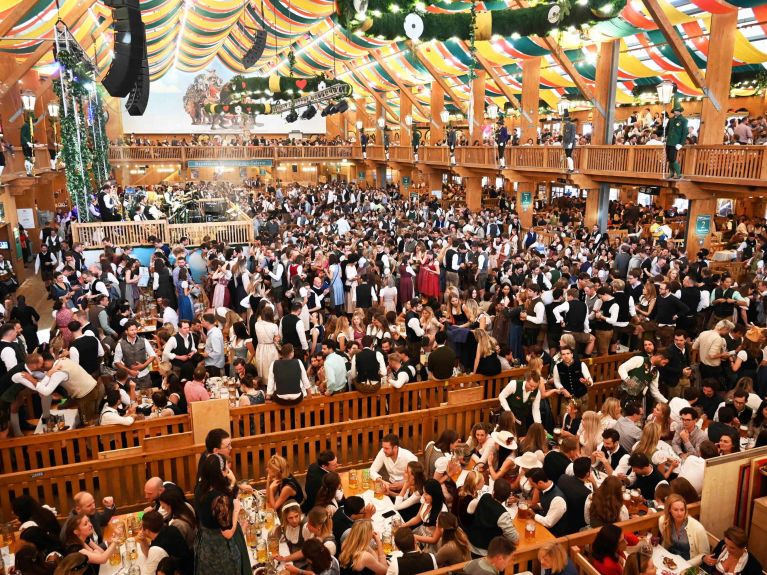
What is typical of Oktoberfest?
- Traditional dress: Large numbers of visitors wear Bavarian clothing such as dirndls and lederhosen.
- Beer: Various Munich breweries serve a special Oktoberfest beer, enjoyed in one-litre mugs – the Maß.
- Music: Traditional brass bands, old-school singalong pop hits and modern groups provide the soundtrack for the festivities.
- Fairground rides: From the famous Ferris wheel and giant slide to historic rides such as the “Krinoline” carousel with its live brass band, Oktoberfest attractions offer entertainment for all ages.
- Traditions: The parade of the “Wiesn” landlords, the keg tapping, the traditional costume and marksmen’s procession, and the open-air concert of Oktoberfest bands are all firmly established highlights.
- The dirndl bow: The Oktoberfest has always been a place for flirting, and the position of a woman’s dirndl bow is said to indicate her relationship status – “Bow on the left, luck will be yours,” as the “Wiesn” saying goes. But beware: not every visitor is aware of this custom!
Oktoberfest worldwide – an export sensation
Oktoberfest is no longer confined to Munich: it has long become a global export. Whether Brazil, Canada or China, there are countless spin-off events that are modelled on the Munich original. Their size and authenticity may vary, but beer, brass bands and traditional dress create “Wiesn” atmosphere around the world.
Dieses YouTube-Video kann in einem neuen Tab abgespielt werden
YouTube öffnenThird party content
We use YouTube to embed content that may collect data about your activity. Please review the details and accept the service to see this content.
Open consent form